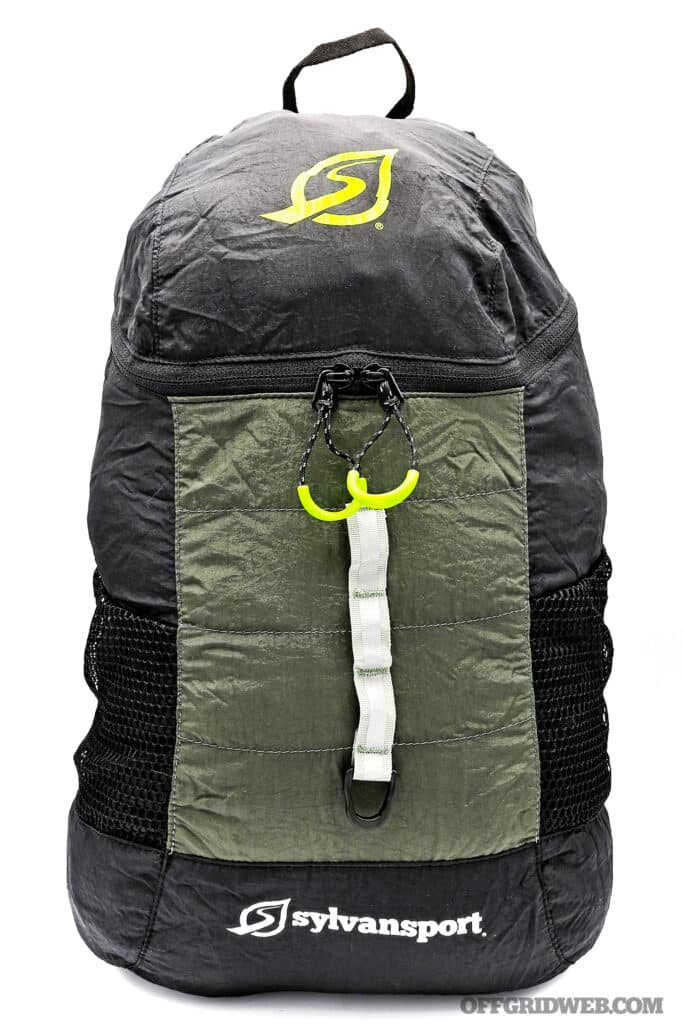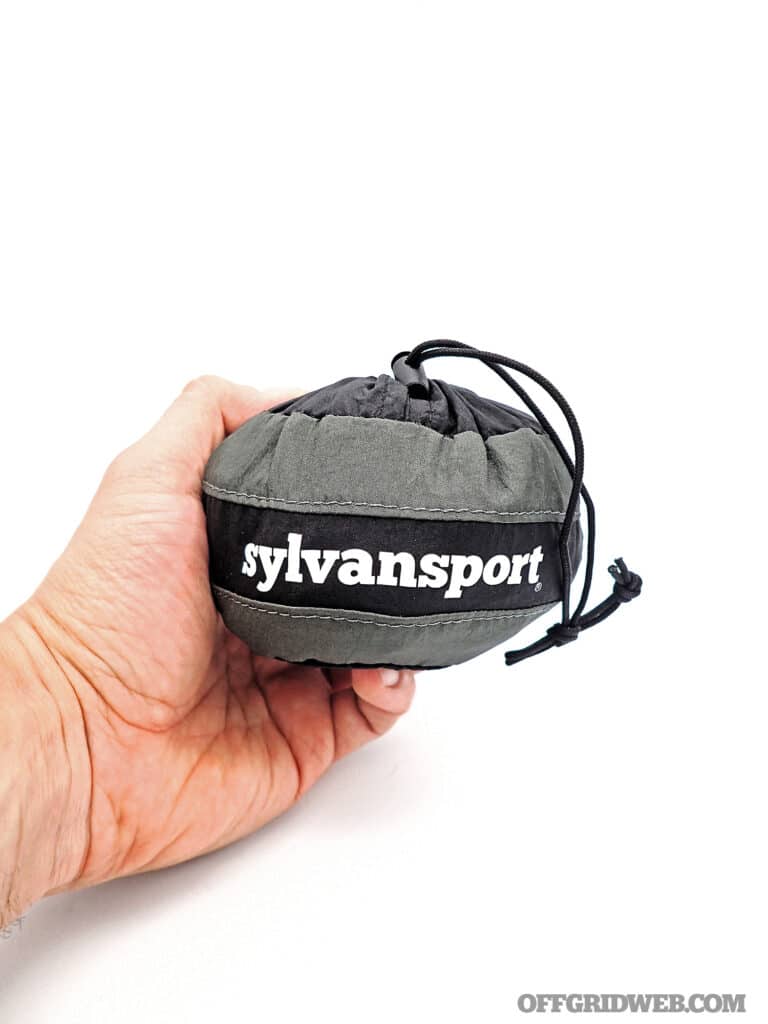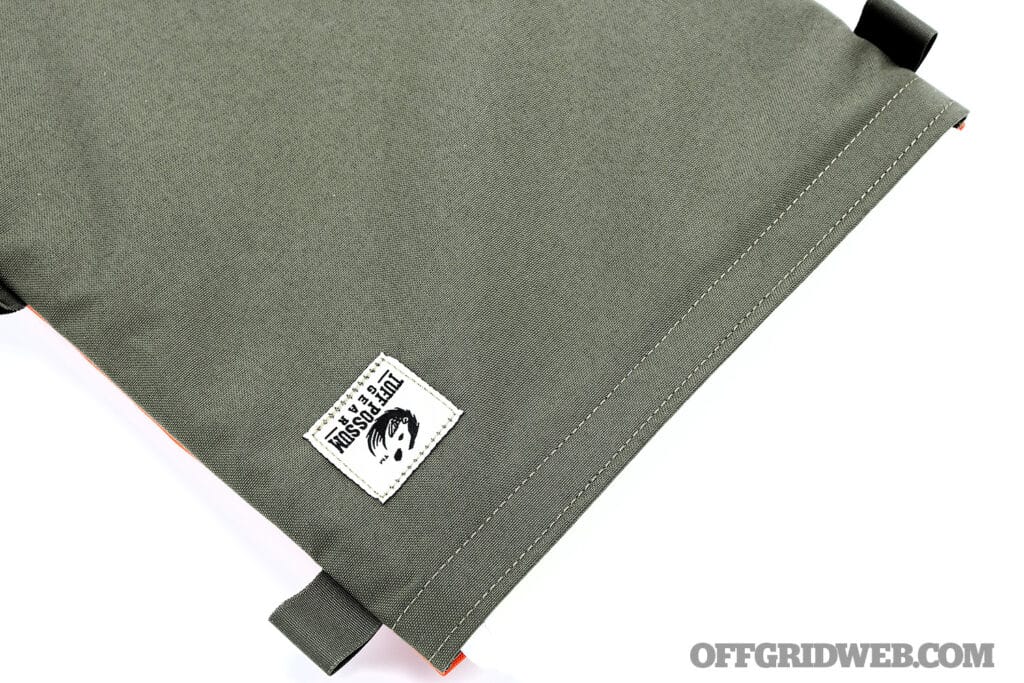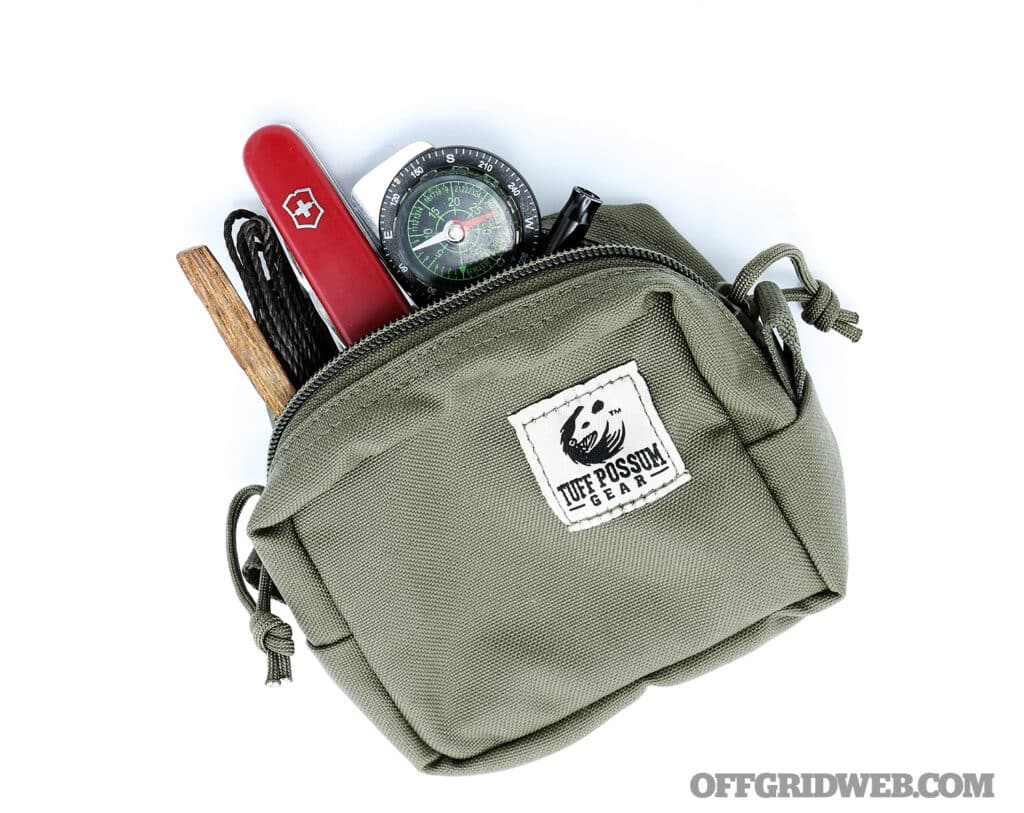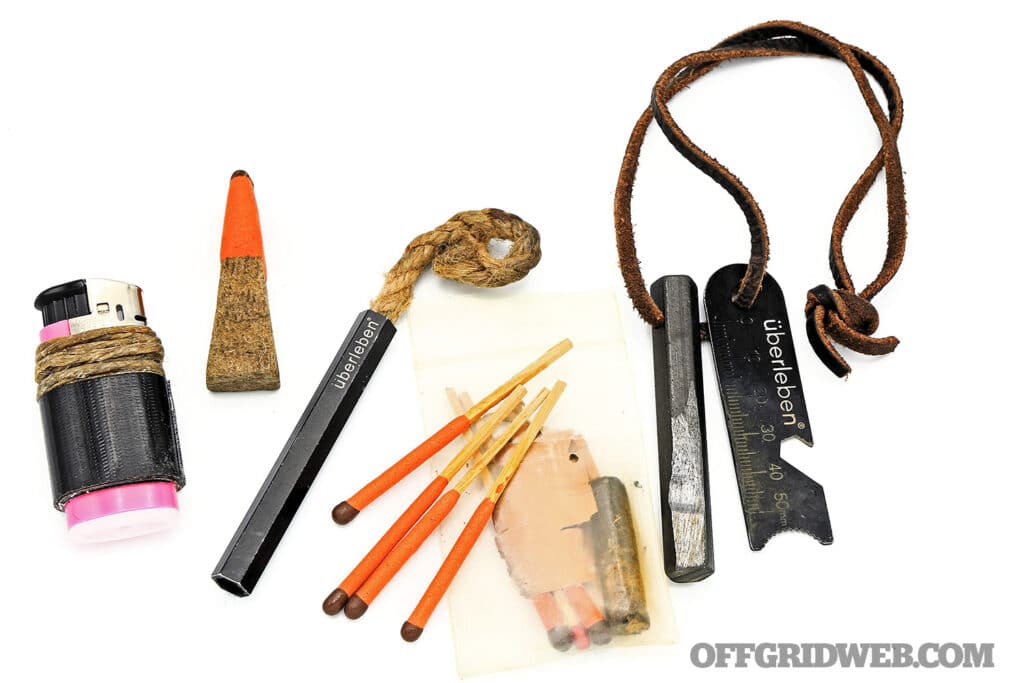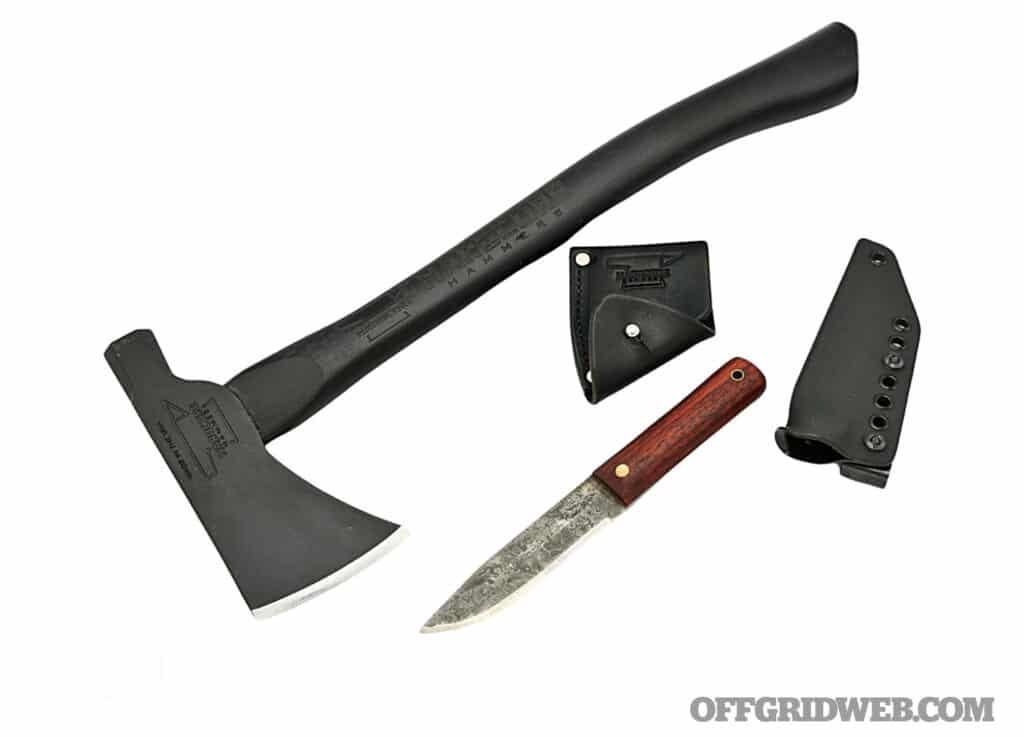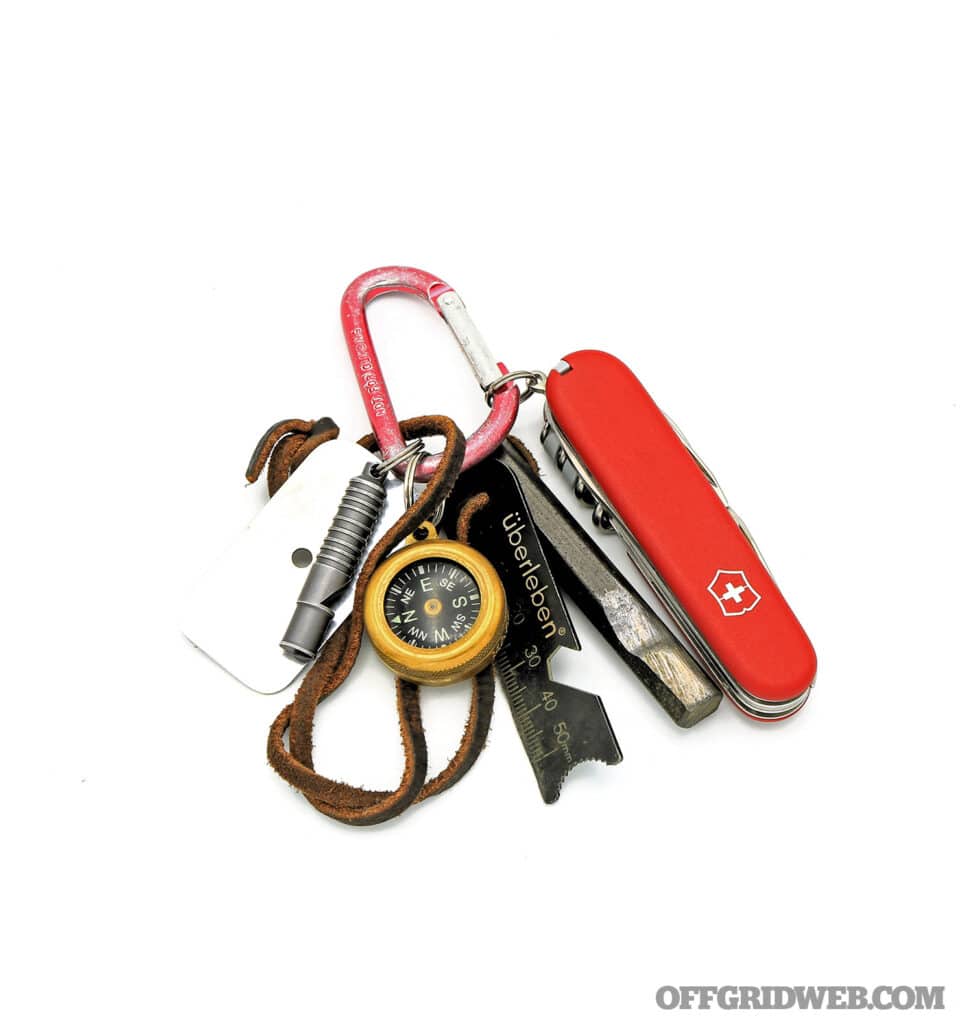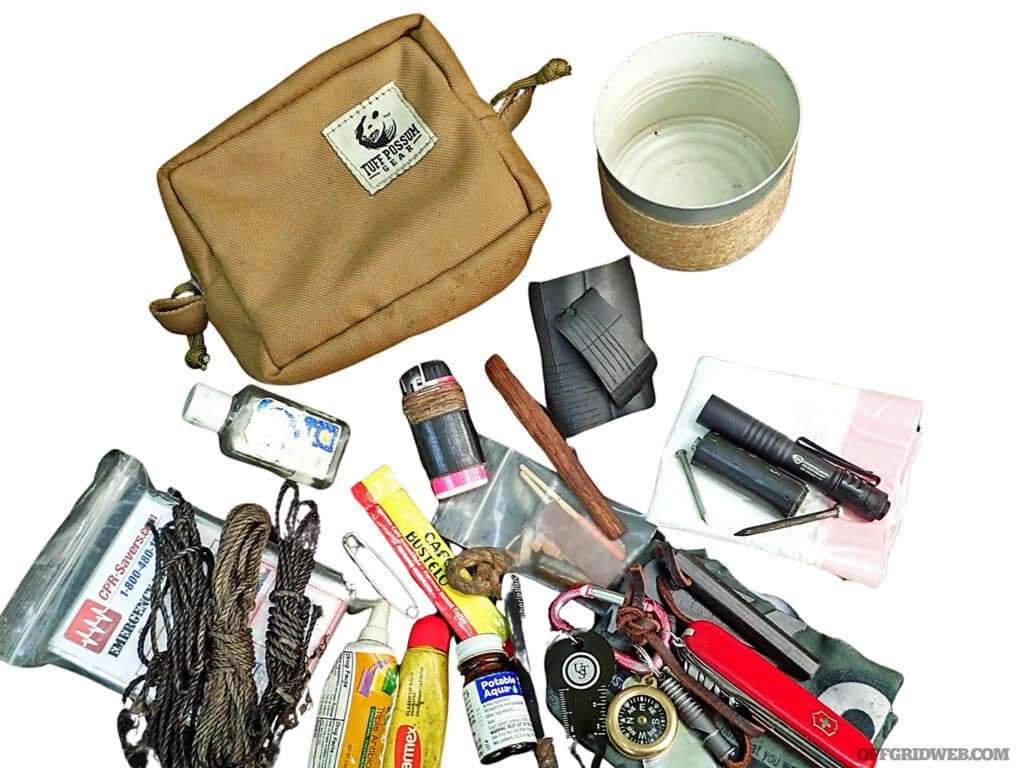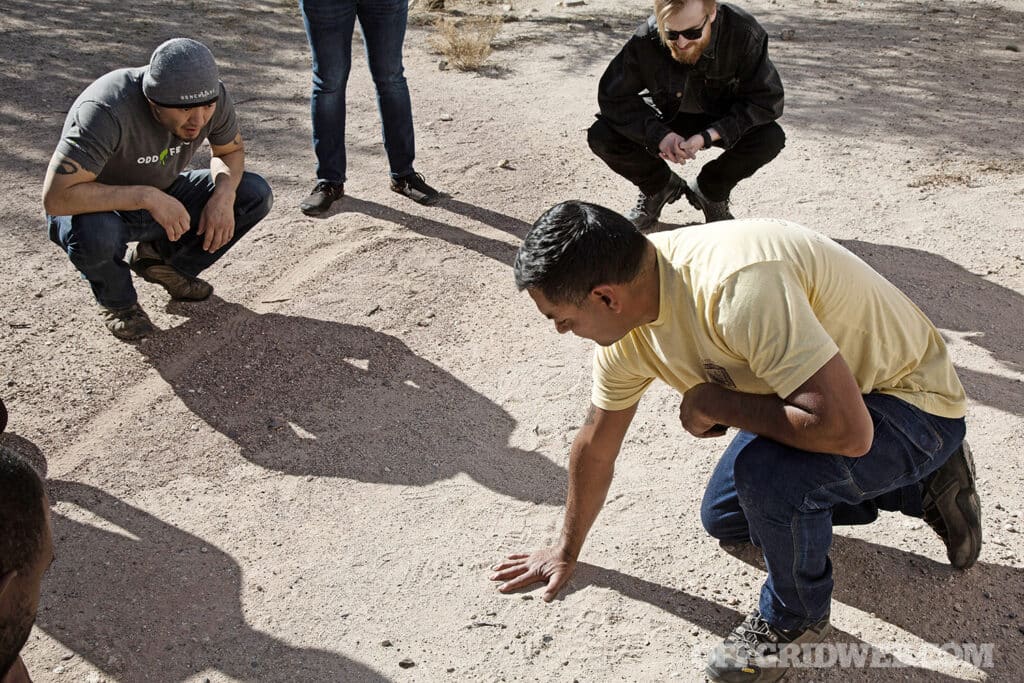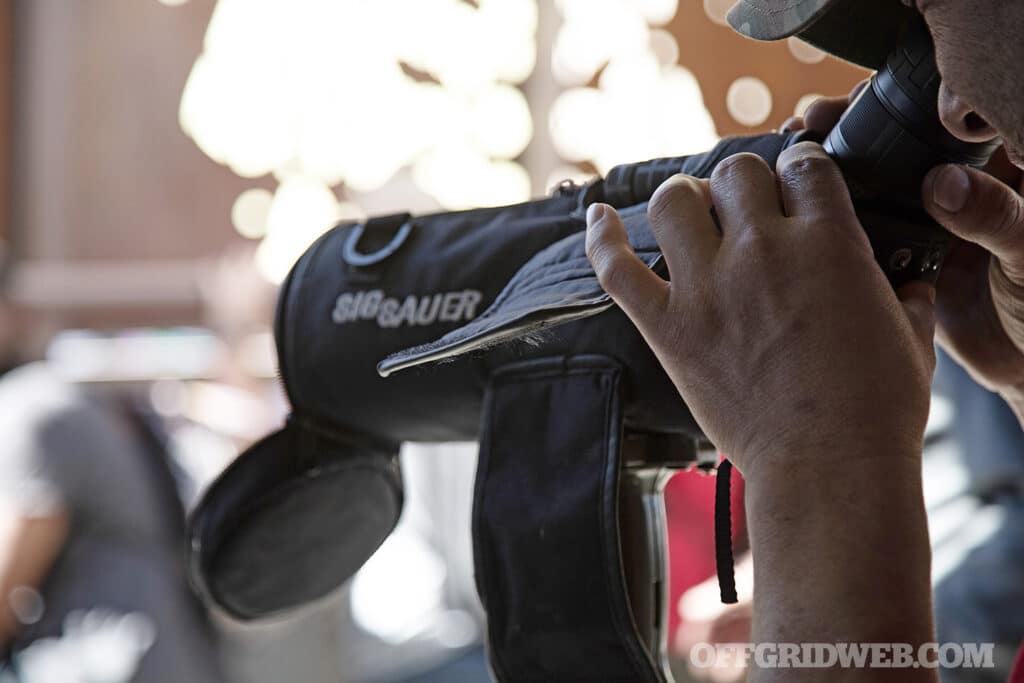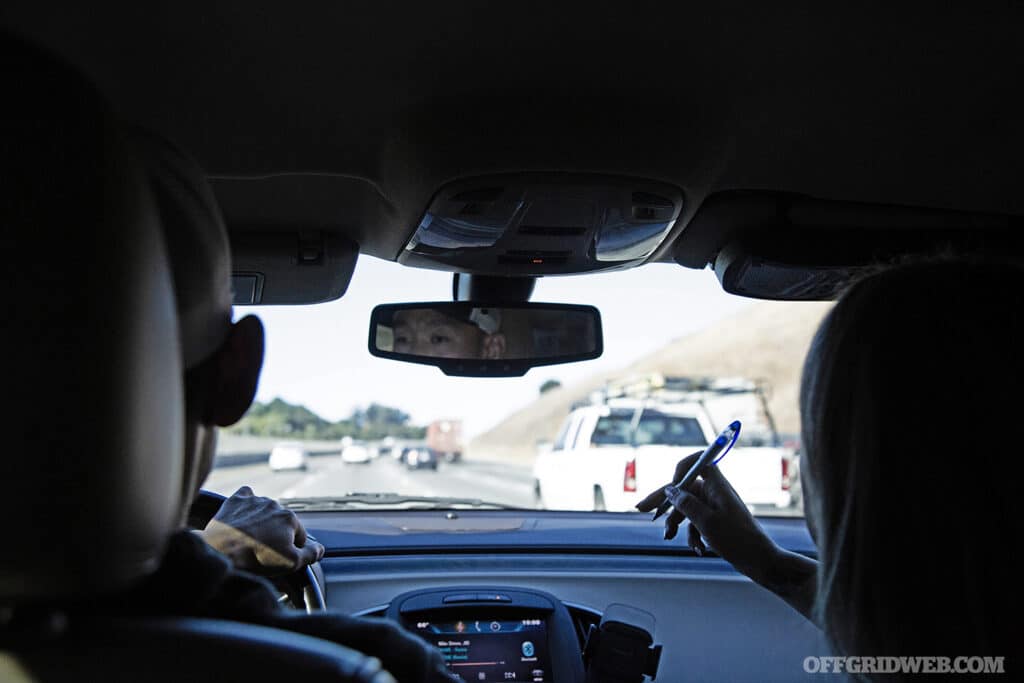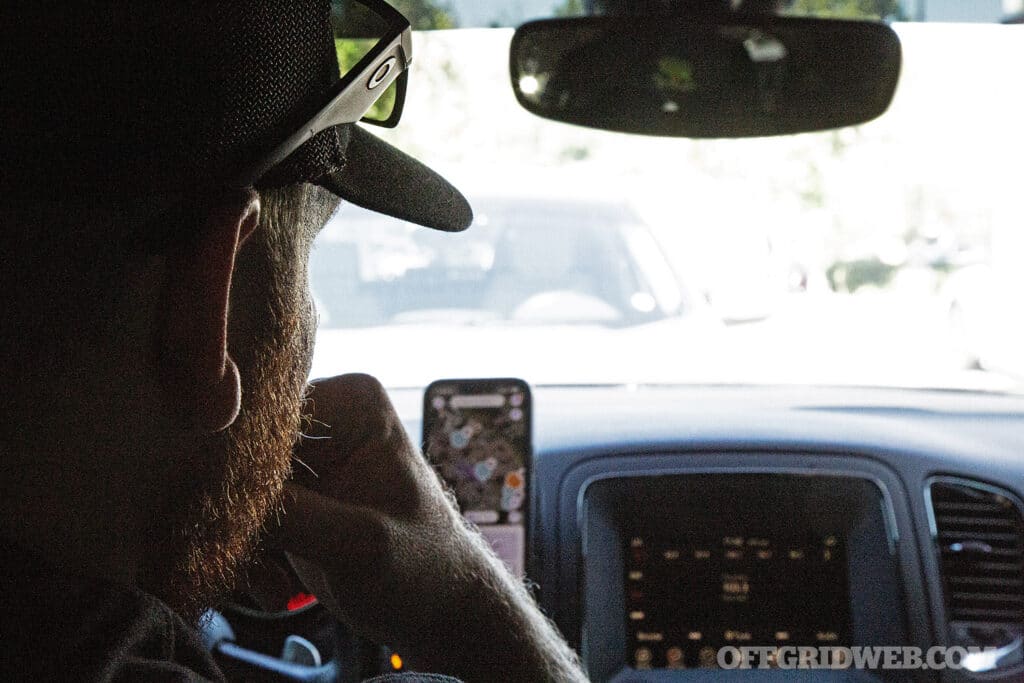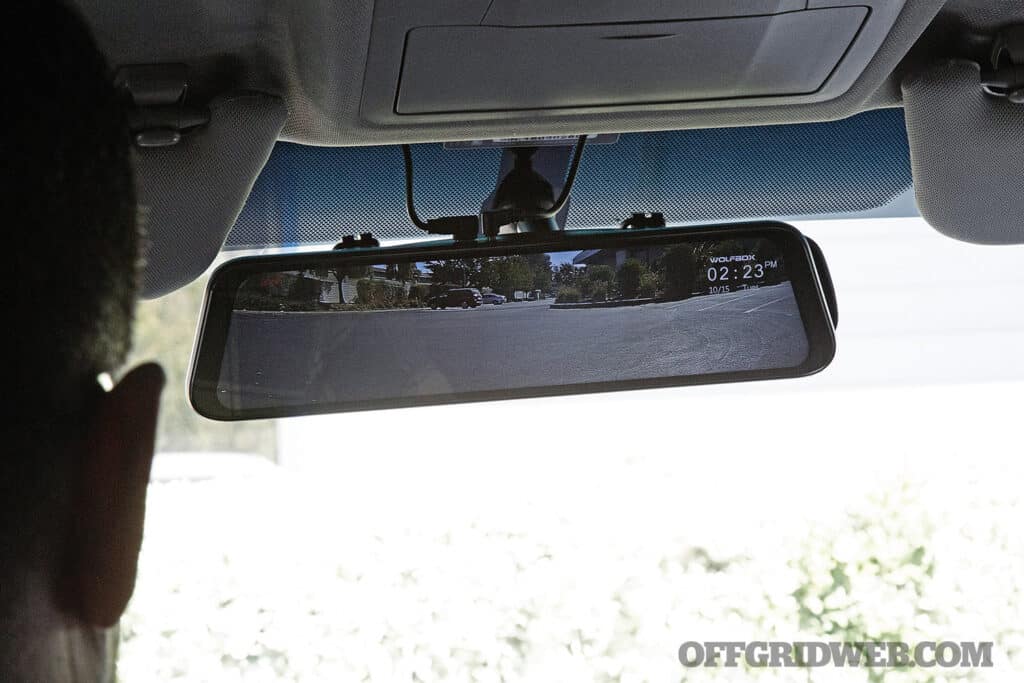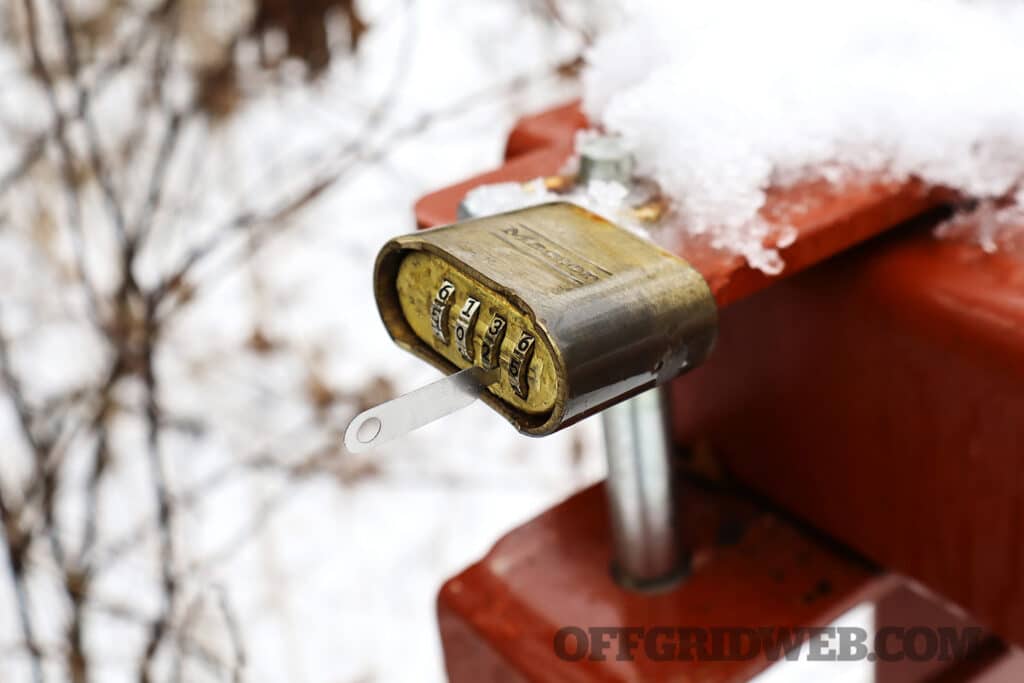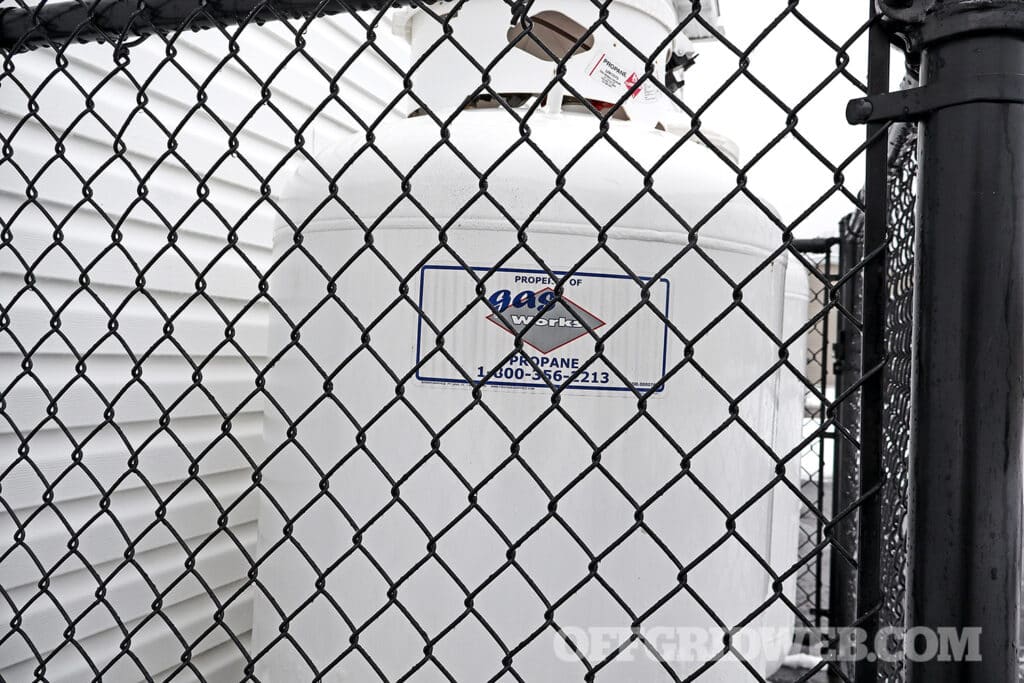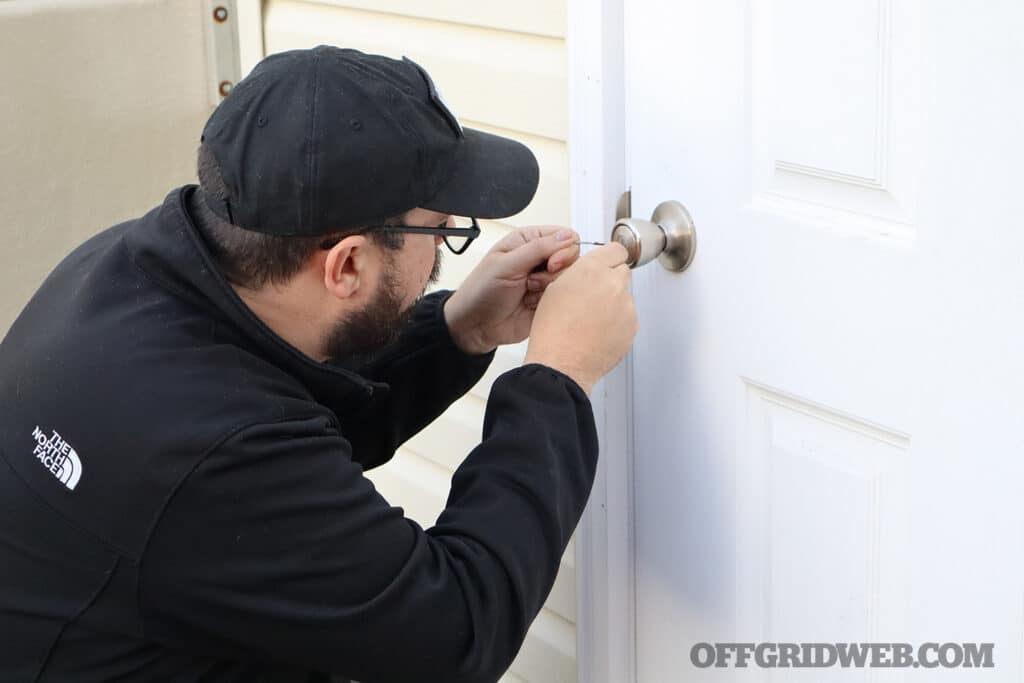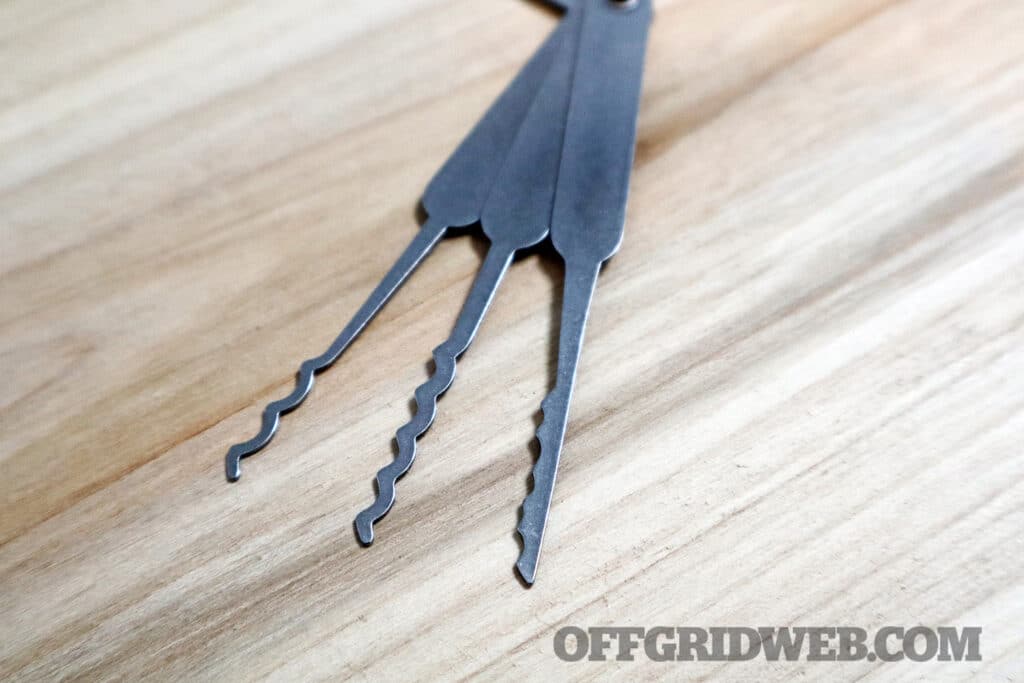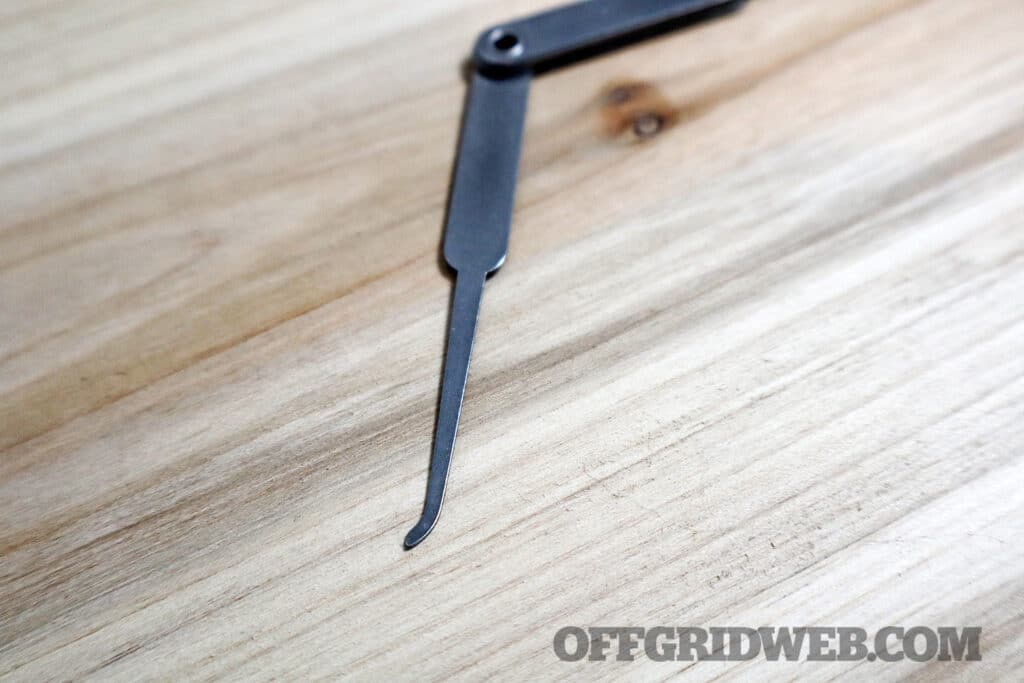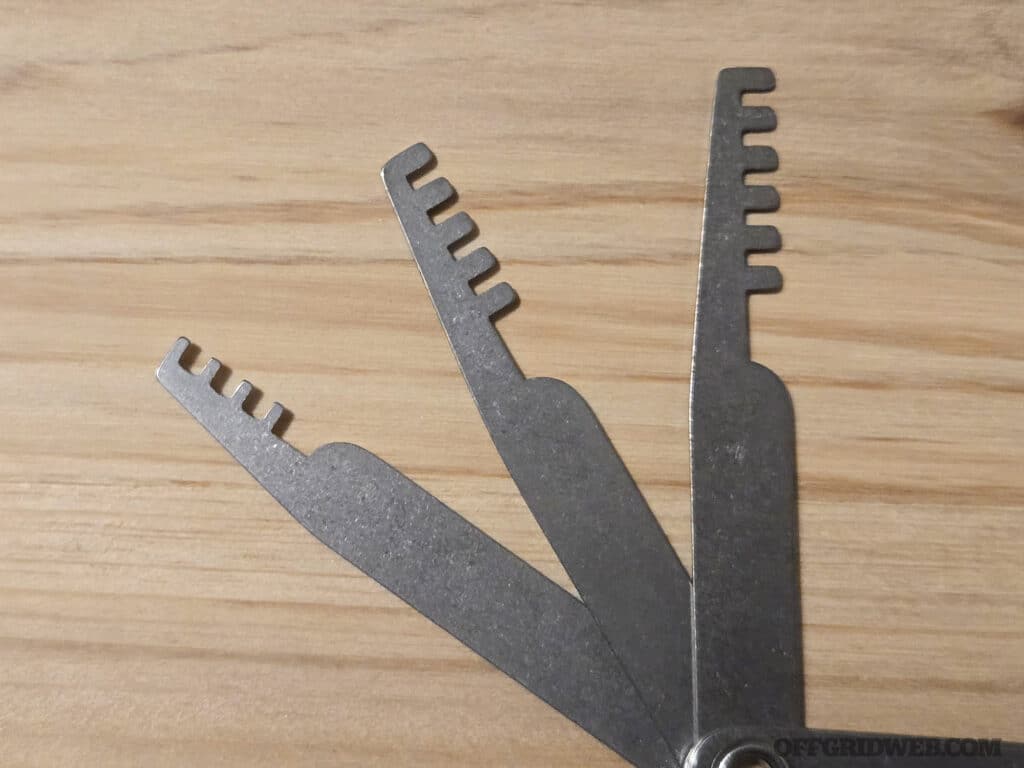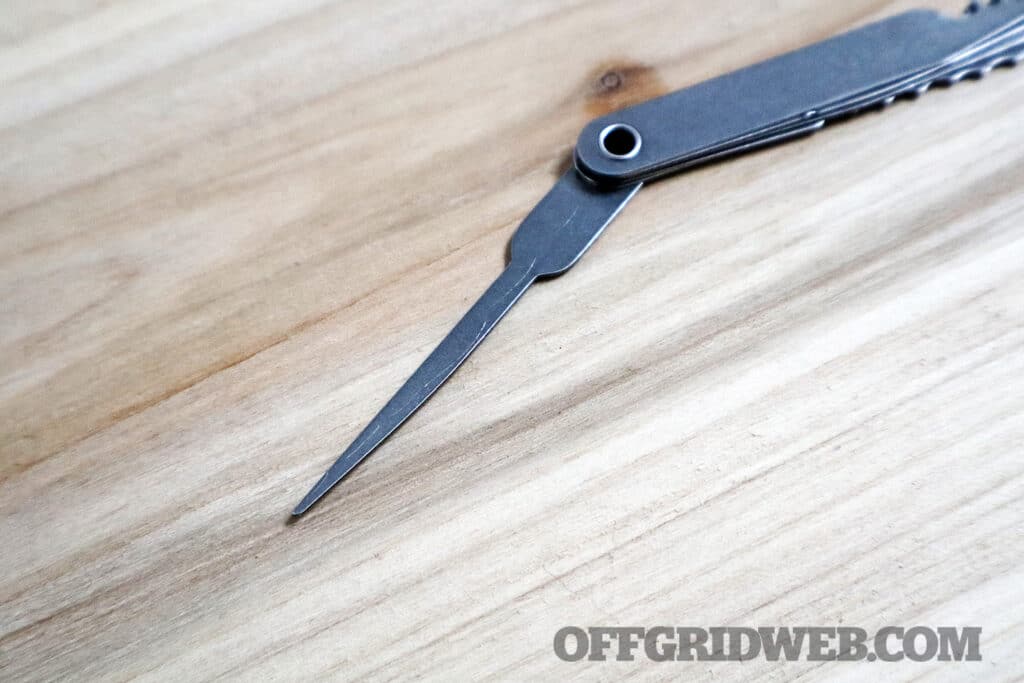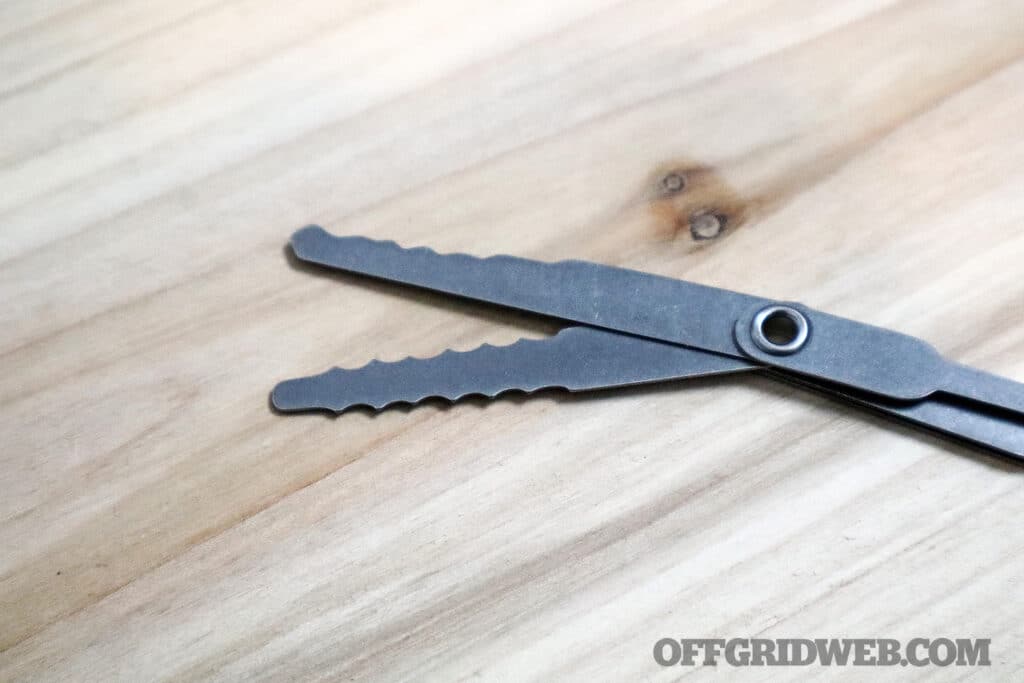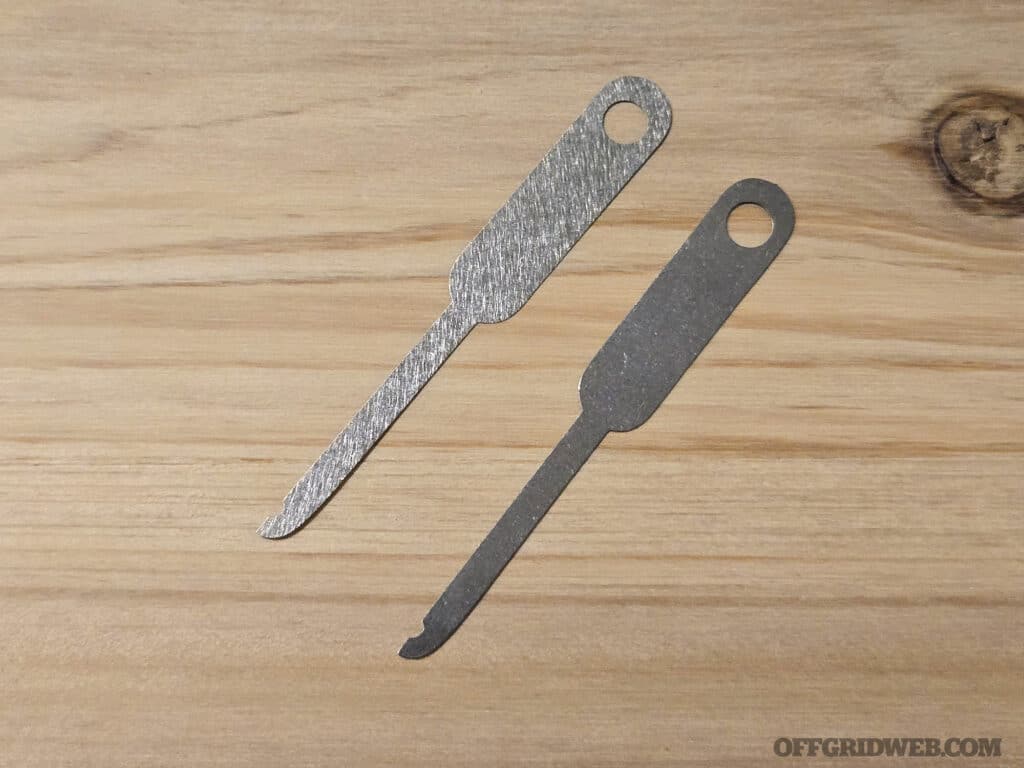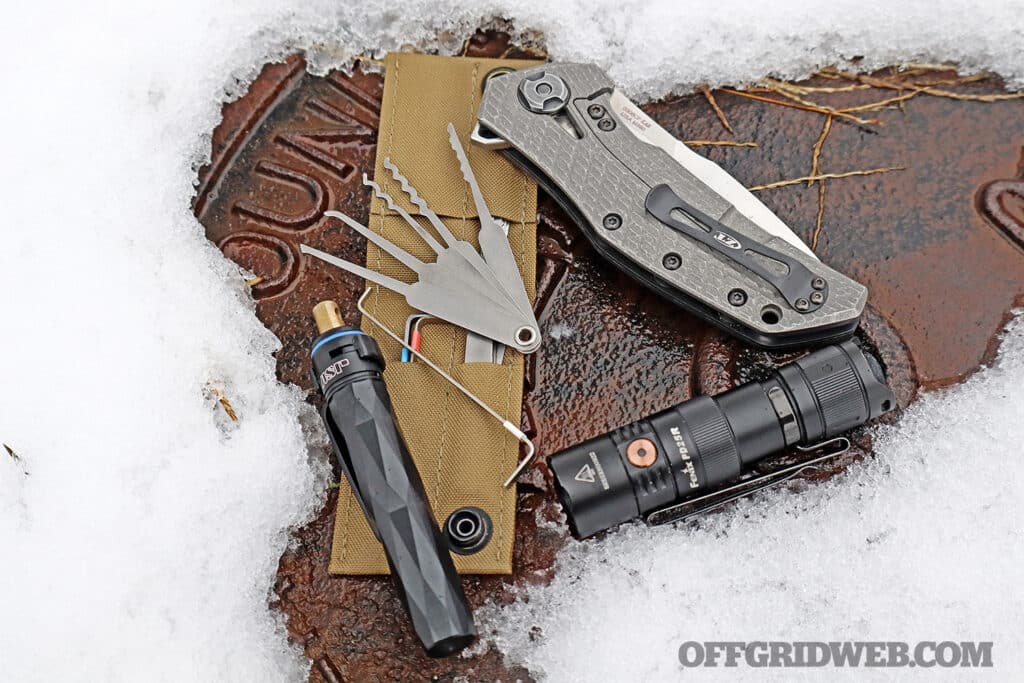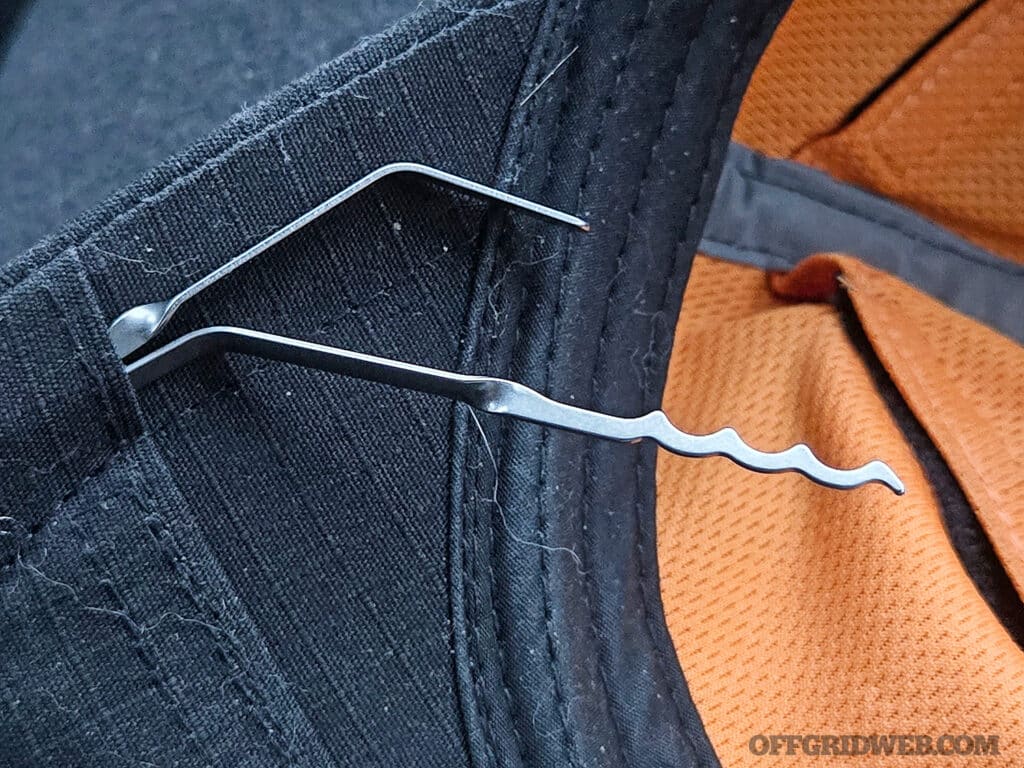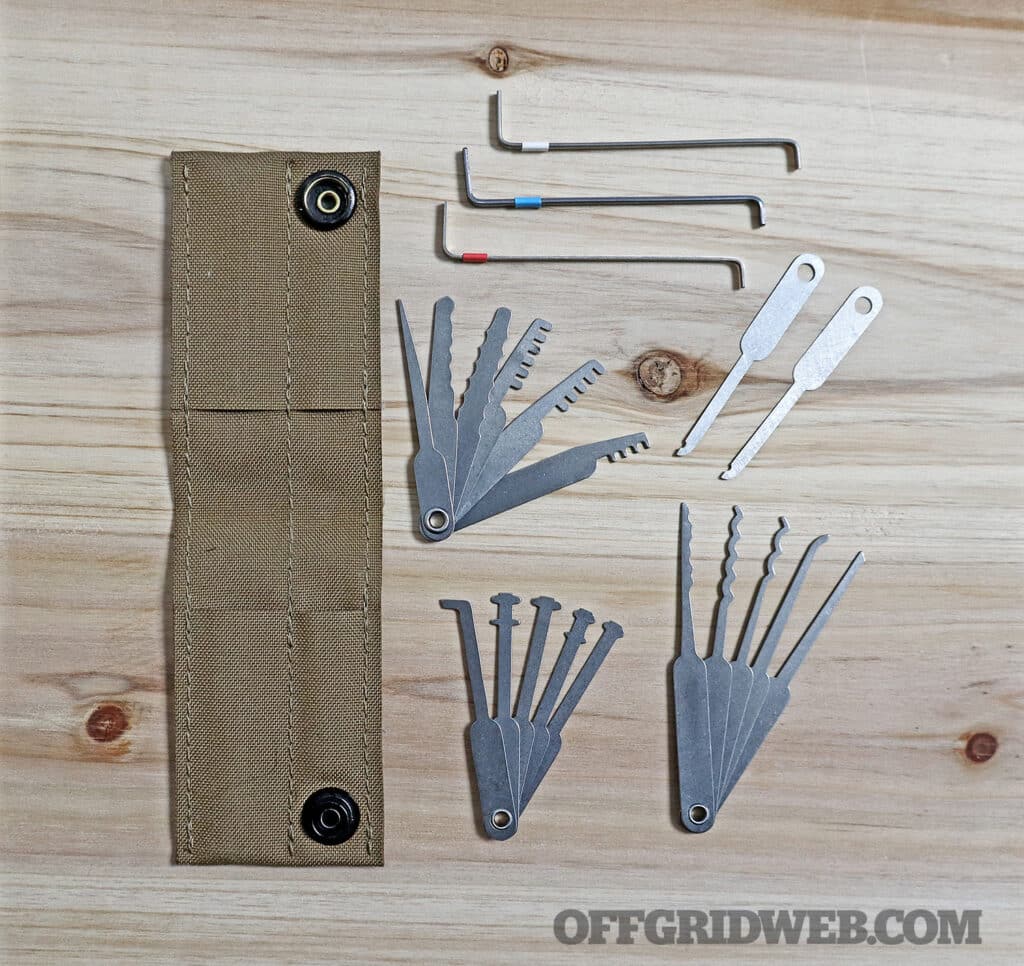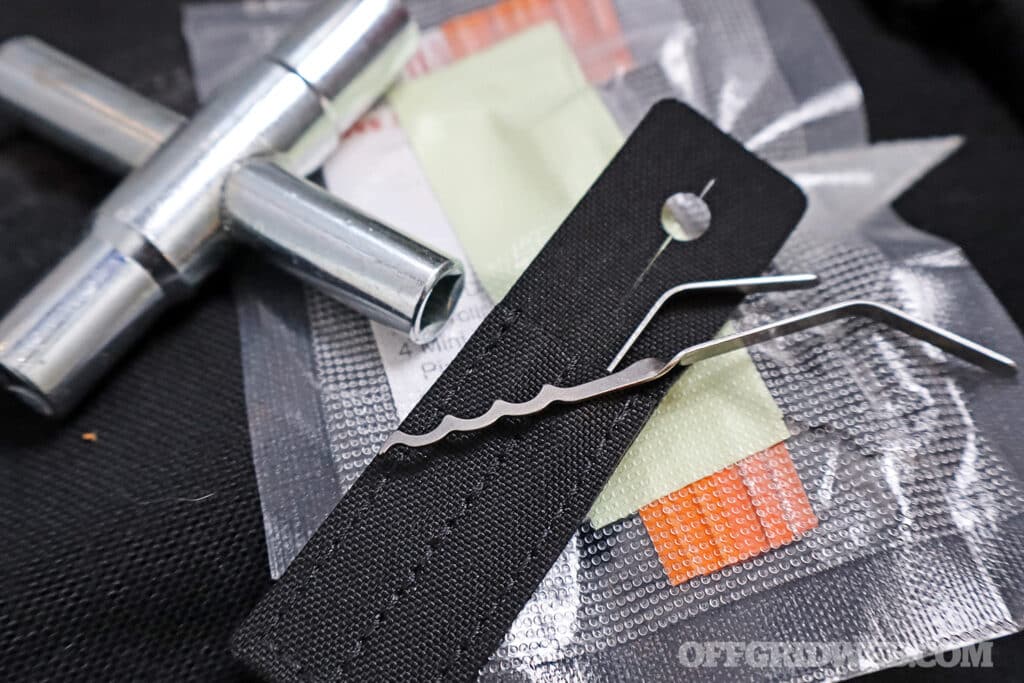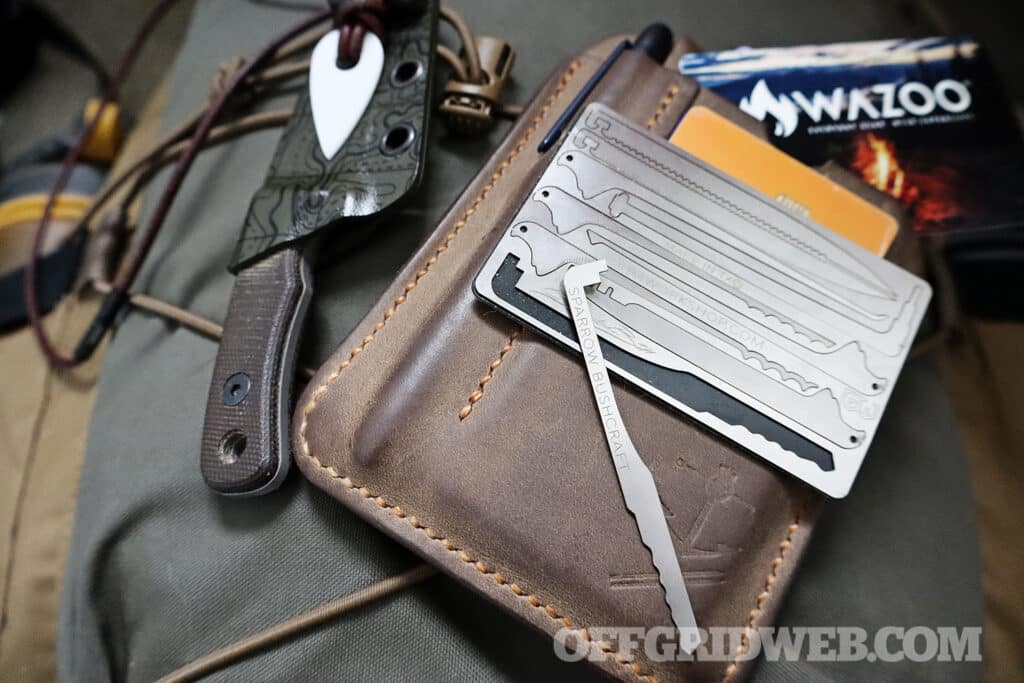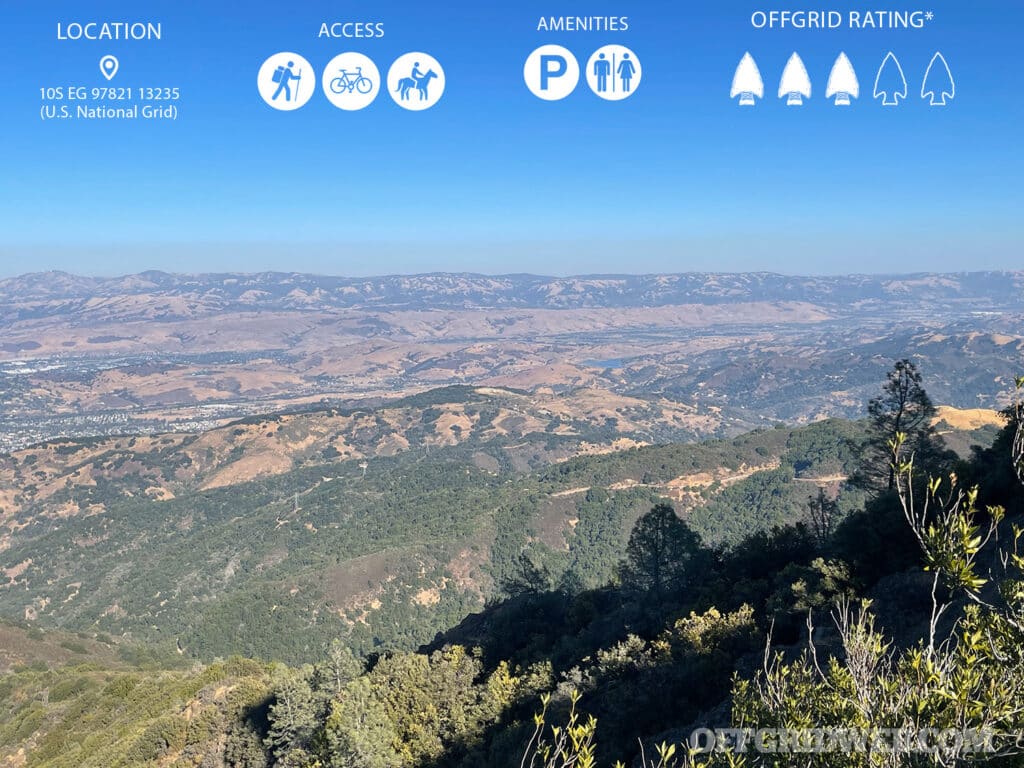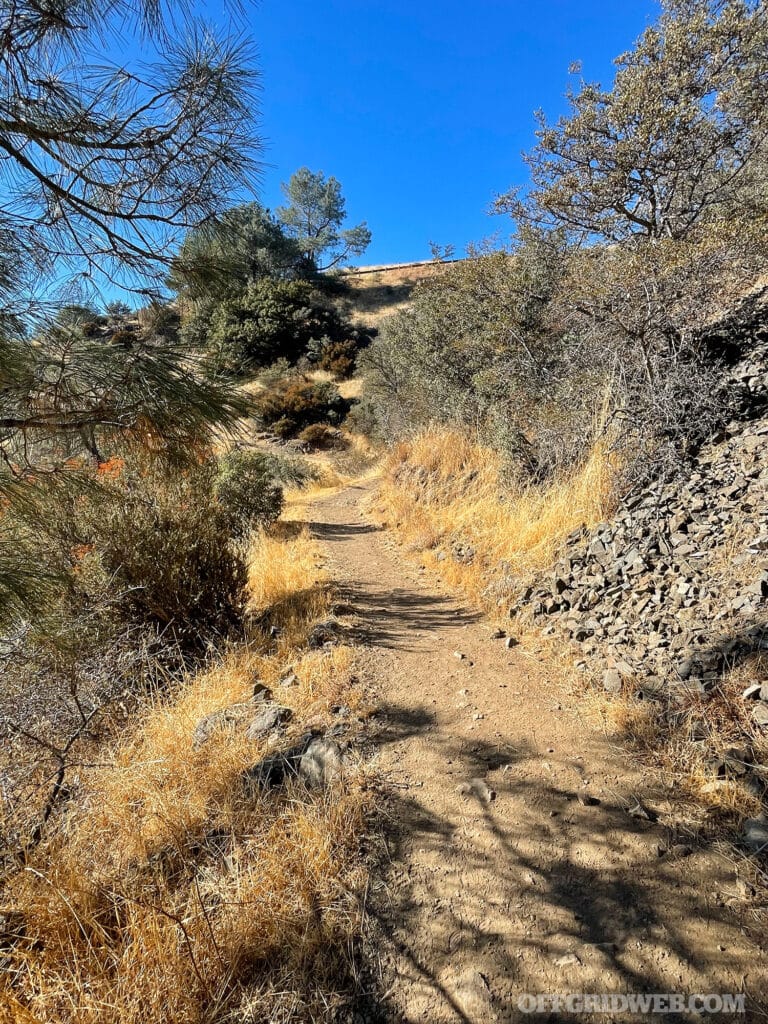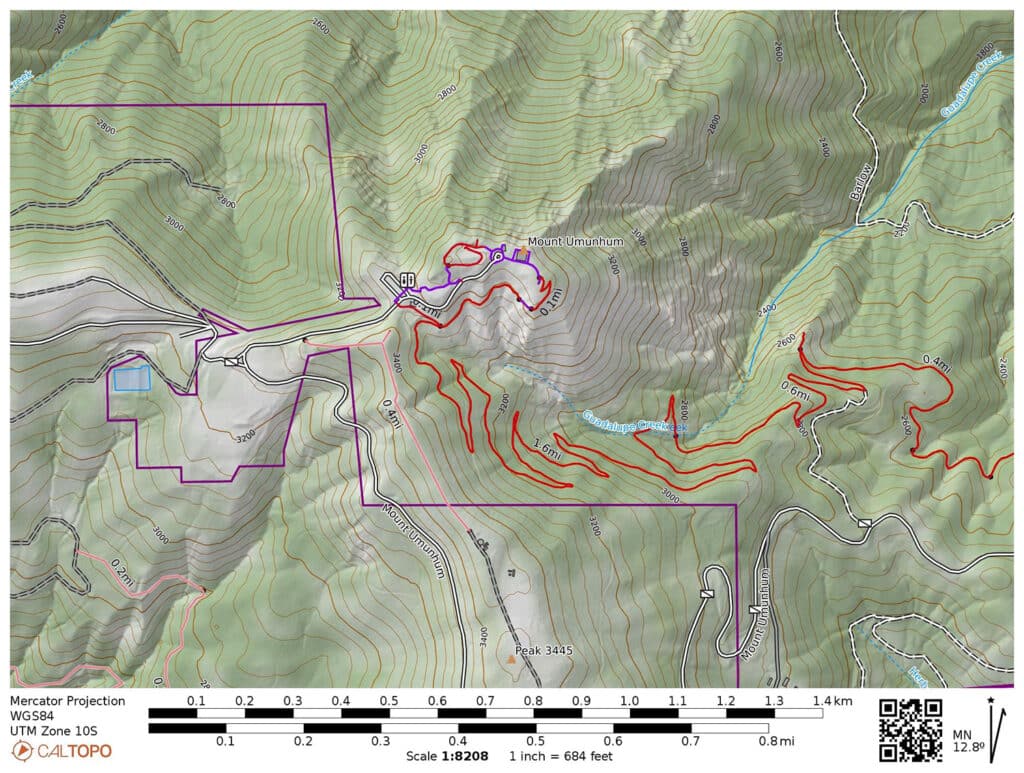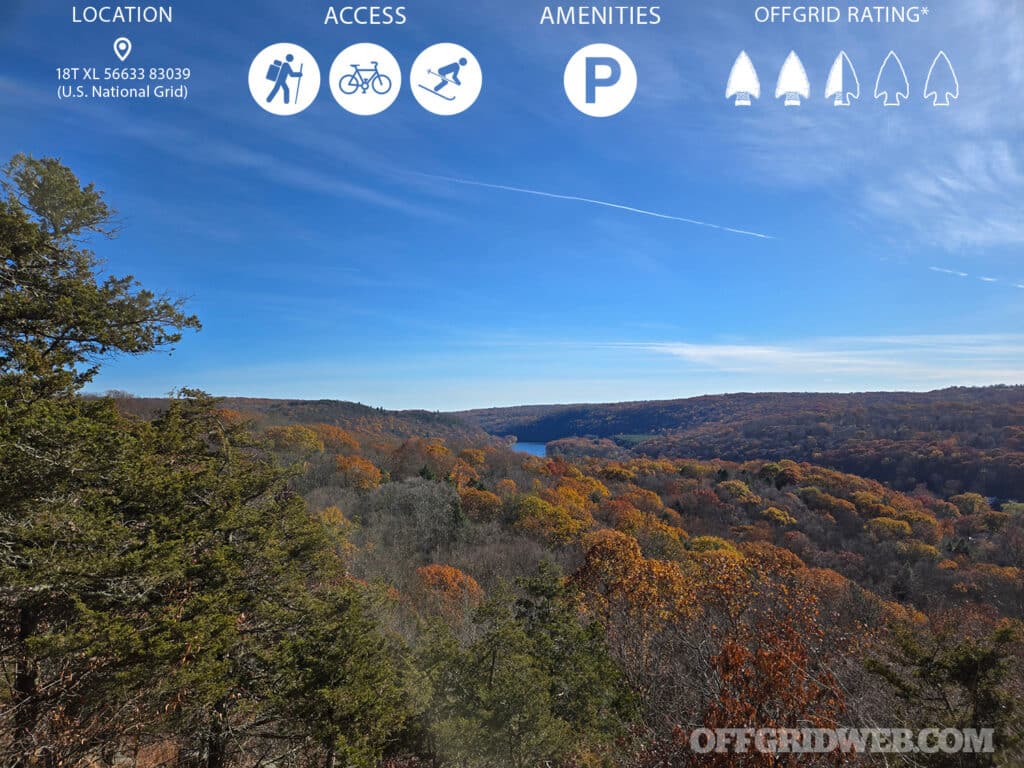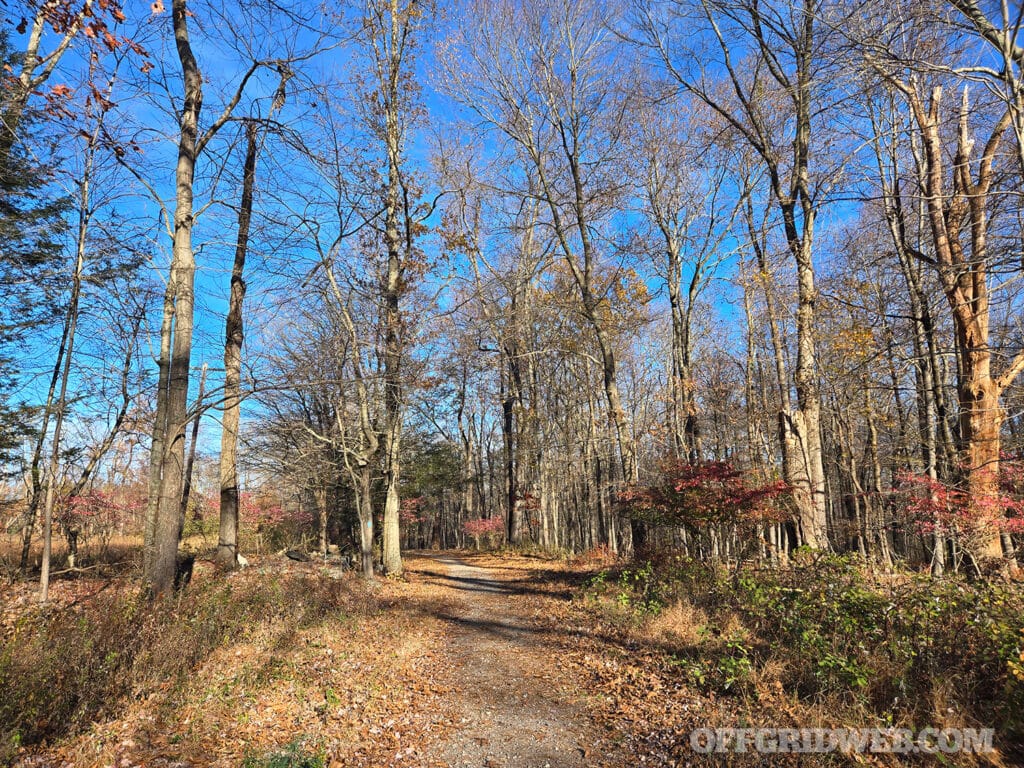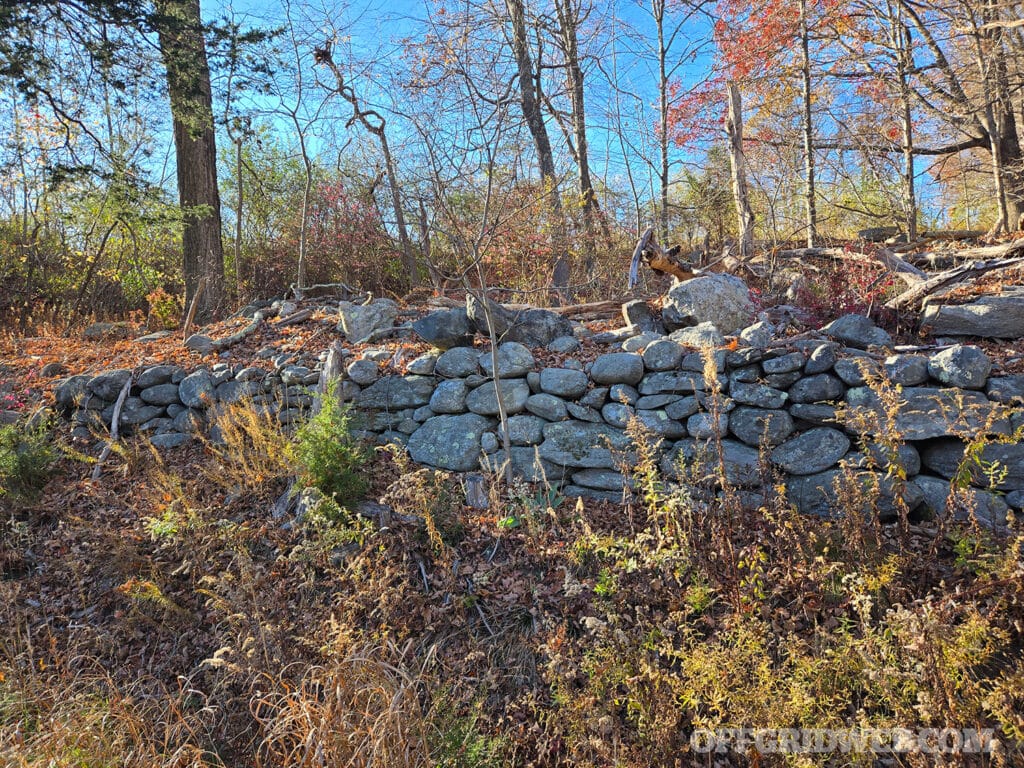In This Article
Peter Magnin’s path to becoming a survival expert reads like something out of an adventure novel, blending raw experiences in military service, immersive journeys into primitive skills, and years spent guiding expeditions through some of the world’s most challenging environments. From SERE training with special operations personnel to brain-tanning moose hides and leading survival courses in the Amazon rainforest, Magnin’s insights into survival, bushcraft, and mindset reflect hard-earned lessons. In this interview, he shares his journey, the critical differences between survival and bushcraft, and why a knife, a lighter, and situational awareness can mean the difference between life and death.

Training in the U.S. Air Force sparked an intense desire to forge survival skills in a multitude of environments.
Interview With Peter Magnin
How did you first get started in survival, and what sparked your interest?
Peter Magnin: It started when I was a kid. My dad was from northern Wisconsin, a classic woodsman. Every summer, we’d spend weeks at a little cabin near Mellon, Wisconsin, during peak mosquito season. He’d be out there fishing, completely unfazed by the bugs while my brothers and I were miserable. I remember watching shows like Survivorman with Les Stroud, and I’ll admit, even a little Man vs. Wild with Bear Grylls. Those early influences planted the seed, but it didn’t click for me as a real path until I joined the Air Force. At my first duty station, I met SERE instructors who were teaching survival skills full-time, and that was it. I knew I wanted to do that. I was fascinated by the idea of turning a childhood love of playing in the woods into something professional and impactful.
Can you describe your role in the Air Force and how it led you to survival training?
I joined the Air Force in 2012 as an aircraft hydraulics specialist and later became fully qualified as a crew chief. My first assignment was at Mildenhall in England, working on MC-130s — aircraft made for high-intensity, special operations missions. At 18, I was thrown into a world where everything was high stakes, and it made me want to push myself further. There were SERE (survival, evasion, resistance, and escape) instructors stationed at our base to train flight crews and special operations personnel. I didn’t even know SERE existed before that, but seeing what they did immediately hooked me. I approached them, told them I wanted to train with them, and they made it happen. For the last six months of that assignment, I spent most of my time learning from those instructors. Field ops, navigation, and survival scenarios — it shaped everything that came after.

You deployed to Africa, which was a pivotal point in your career. What happened?
That deployment was rough — small unit, poor conditions. We had porta-potties, sometimes holes for bathrooms, and maybe one shower a week. I worked 14- to 16-hour days for months, and eventually, I developed skin infections that turned into MRSA. The only medical care was a Navy nurse in a shipping crate handing me antibiotics — 20 or 30 pills a day. It destroyed my gut. When I came home, I started losing weight, 50 pounds in a few months. Eventually I was diagnosed with a digestive issue that got me medically retired. At the time, it was devastating. I’d been on track to retrain as a permanent SERE instructor, and suddenly that door was closed. But, in a way, it pushed me down a different path.
How did you recover after the military, and what role did survival play?
Recovery was slow — months in bed where I couldn’t even mow the lawn. I couldn’t do much physically, so I started reading survival books and watching YouTube videos just to stay engaged. It went from five books to 10 to 100. Eventually, I decided to stop just reading and start doing. When I was finally healthy enough, I began experimenting with skills in the woods. I realized pretty quickly how hard survival was despite all the theory I’d learned, and that’s when I found my first mentor, Terry Barney, through a bushcraft forum. He taught classes that gave me the hands-on instruction I needed. Survival became a lifeline for me; it gave me a sense of purpose and a way forward.

Is there an important difference between survival and bushcraft?
Survival is about staying alive, getting seen, and getting help — at any cost. It’s practical and immediate. Bushcraft, on the other hand, is about using natural materials to live comfortably in the wilderness. There’s overlap, because in survival, you might need to use bushcraft techniques, like building a shelter out of logs. But survival has different priorities. If you’re lost, you should signal for help before wasting time on a fire or shelter. That’s the mindset difference. People blur the lines, and it can get dangerous when they treat bushcraft like survival.
You spent three months at Jack Mountain Bushcraft School. What was that like?
That experience was life changing. You don’t really understand something like a primitive shelter until you sleep in it, tweak it, and live in it for weeks. At Jack Mountain, we spent every day immersed in skills: carving canoe paddles, brain-tanning moose hides, and cooking every meal over fire. The firewood management alone gives you a whole new perspective. It’s grueling work, but that time is critical. I completed the Journeyman Program, which was a massive list of skills and challenges — weeks in shelters, animal tracking, plant ID, expedition planning. Only one person had completed it before me, Sam Larson from Alone. That program pushed me further than anything I’d done before.

How did you go from that to getting involved in guiding jungle expeditions?
I met Joe Flowers at the Global Bushcraft Symposium in Canada. I’d already mastered boreal forest skills and wanted to challenge myself with something new: jungle survival. Joe noticed my experience as a wilderness EMT and trip leader, so he invited me on one of his Amazon expeditions. During that trip, he kept giving me more responsibilities, and by the end, he told me, “You’re coming back next year, but you’re working for me.” Since then, I’ve guided trips with him every year and even led some of my own for media projects. Now it feels like my whole year revolves around getting back to the jungle.
What’s the most memorable experience you’ve had in the jungle?
There are so many, but one that stands out was my first time with the Matis tribe. They decided to catch an electric eel — 7- or 8-feet long — hiding in a muddy puddle the size of a chair. They spent hours crushing vines to deoxygenate the water and scooping out mud until the eel finally surfaced. When they speared it, I couldn’t believe something that massive had come from such a small puddle. Later, I tried catching one bare-handed as part of a Matis “rite of passage” prank. It shocked me so hard that my entire body seized up, and I fell backward. It became tradition. At the end of every trip, anyone who wants to try catching an eel can jump in with me. Most people don’t last long.

What critical skills do you rely on when guiding expeditions in the jungle?
The two most important skills are awareness and managing group dynamics. Awareness in the jungle is critical because the consequences of small mistakes are amplified. I’ve pulled countless thorns out of people’s legs and feet because they weren’t paying attention to their surroundings. The Matis can run barefoot through dense jungle while looking up at monkeys in the trees. They have this incredible ability to process subtle environmental clues, like how a tree fell or the way water ripples. Most people don’t have that awareness. On top of that, managing expedition behavior is essential. I constantly check in with people, watch for fatigue, and make sure no one is pushing themselves to the point of injury. Whether it’s machete cuts or venomous insects, you need to stay ahead of problems before they escalate.
What’s your must-have survival gear in the jungle?
If I had to narrow it down, my essentials are a knife, a lighter, a headlamp, and water. A whistle for signaling is critical too. Over the years, I’ve refined my kit to make sure I always have it on me, even when swimming. I designed a knife that clips onto swim trunks and doesn’t rust, and I use Exotac’s waterproof lighter holder to keep my fire starter safe. The jungle gets pitch black at night — no light gets through the canopy — so a headlamp is non-negotiable. The right gear can mean the difference between being comfortable and being miserable, or even between life and death.

What mindset is most important in a survival situation?
The mindset that matters most is maintaining a positive mental attitude, but that’s not something you can just switch on. It has to be trained. You need to put yourself in tough situations and practice staying positive under pressure. I like to use the analogy of an apple: You can go through life thinking you’re an apple, but when you’re squeezed, orange juice comes out. Survival situations reveal what you’re truly made of, and the only way to prepare for that is to test yourself. Over time, those experiences give you a baseline to draw from, which can make all the difference when things go wrong.
How do you stay prepared in extreme environments like the jungle?
Preparation in the jungle comes down to paying attention to the smallest details. Something as simple as improperly setting up a tarp can lead to your sleeping bag and gear getting soaked, and in the jungle, that’s a serious issue. I’ve seen people lose machetes or have their packs invaded by ants because they didn’t take precautions. It takes a week or two of being out there to develop the right mindset — double-checking your kit, keeping things off the ground, and always thinking a step ahead. Preparedness is a constant effort, but it’s what keeps you comfortable and safe in extreme conditions.
How do you prepare your students for survival scenarios?
I focus on breaking down concepts into the simplest steps and making them relatable. For example, one of my mentors, Andre-Francis Bourbeau, used scenarios to challenge students’ assumptions. He’d take people out on a snowmobile, strip them of essential gear, and create situations where survival seemed impossible. The point was to show that survival is about the simplest solutions, like blowing a whistle for rescue instead of overcomplicating things. When I teach, I emphasize practicality. For instance, with fire-building, I’ll show students how to start a fire with one match and kerosene, because that’s what survival is about. Then, we work backward to harder techniques, but I always prioritize what works in a real emergency.
How do you differentiate your teaching for different audiences?
The skills themselves don’t change, but the way I teach them does. I tailor my examples and stories to the audience, whether it’s enthusiasts, military personnel, or first responders. A big part of being a good instructor is learning how to teach. I’ve spent years not just honing my survival skills, but also studying how to communicate them effectively. You can be an expert at something and still fail to teach it if you don’t know how to connect with people. Every group is different, and understanding how they think is key to making lessons stick.
What’s the most common mistake people make in survival situations?
The most common mistake I see is a lack of awareness. Moving too quickly and not paying attention to what’s happening around them. In the jungle, this often leads to stepping on black palm thorns or running into ants and wasps. I’ve seen people get hurt because they missed subtle clues, like the way a tree fell or the presence of vines that indicate hidden dangers. Survival is about slowing down and observing your surroundings. Most mistakes happen because people are rushing or panicking, and the jungle punishes that behavior harshly.
What draws you to teaching primitive skills?
Primitive skills are powerful because they strip everything down to the basics. When you learn something like bow drill fire, you’re creating an element of life — fire — using nothing but your body’s energy and the materials around you. It’s humbling and empowering at the same time. At Jack Mountain, we had to log hundreds of bow drills, tracking weather, humidity, and wood types. To make it even harder, we were encouraged to burn our sets after every fire, so we’d have to start from scratch each time. Those experiences taught me not just the skills, but also the patience and determination needed to succeed in challenging environments.

Do you have any advice for beginners starting survival training?
My biggest advice is to take classes. Watching videos and reading books is fine, but there’s no substitute for hands-on learning with a vetted instructor. Survival skills are tactile. You need to feel the bow drill, see the ember form, and make mistakes with someone guiding you. It’s also important to start with the basics and build from there. Don’t jump into advanced techniques until you’ve mastered the fundamentals.
How do you vet survival instructors?
Vetting survival instructors can be tricky, but the key is looking into their background and mentors. The best instructors are usually part of a lineage. They’ve trained under someone reputable and can trace their knowledge back to the greats. Hands-on instruction is non-negotiable. I can tell within 30 seconds of watching someone on Instagram whether they learned a skill from YouTube or a real mentor. If you’re serious about survival, do your homework on who you’re learning from.
Are there any resources you would recommend to those interested in survival?
There are so many great resources, but one I always recommend is the Bushcraft USA forum. It’s been around for years and is still active today. It’s a great place to find knowledge, connect with experienced people, and learn at your own pace. For books, I’ve read hundreds, but I’ll always suggest starting with a handful of the classics:
- SAS Handbook by John “Lofty” Wiseman
- Bushcraft by Mors Kochanski
- Outdoor Survival Skills by Dean Olsen
What’s next on your survival journey?
Right now, I’m cofounding a nonprofit called Veterans in the Wild with a retired Navy chaplain. We’re running wilderness trips for veterans, and we’ve already got 10 trips lined up this year. It’s a big undertaking, especially with a toddler and a newborn at home, but it’s a passion project I believe in. Beyond that, I’m continuing to improve the jungle expeditions I lead every year and taking on private instruction and media projects through my LLC, Peter Magnin Survival. My goal is to keep teaching, learning, and sharing these skills with as many people as I can.

About Peter Magnin
Hometown: Sumter, South Carolina
Education: Associate of Science, Fish and Wildlife Management
Recommended Survival Schools:
- Boulder Outdoor Survival School
- California Survival School
- Jack Mountain Bushcraft
- Howl Bushcraft
Favorite Food: Homemade beef bulgogi
Favorite Movie: O Brother, Where Art Thou?
Favorite Quote: “The more you know, the less you have to carry. The less you know, the more you have to carry.” -Mors Kochanski
Instagram: @petermagninsurvival
Jungle Trips: bushcraftglobal.com
Veterans NonProfit: veteransinthewild.org

Peter Magnin’s Everyday Carry
Base Kit:
- Glock 45 w/Trijicon RMR Type 2 and Streamlight TLR1 HL
- Glock 26, or Ruger LCP II (if a smaller signature is required)
- Benchmade 940
- Streamlight
- Microstream
- WAZOO Cache Belt w/Adventure Kit and handcuff key
Mission Dependent Add-On’s:
- Garmin Fenix w/GPS Function
- Tuff Possum Entry Kit
- Notepad and Sharpie
- Corvus KT custom Puukko
- Bic Lighter in Exotac Firesleeve
- WAZOO Viking Spark Necklace
- WAZOO Fire Card
Read More From Issue 66
Don’t miss essential survival insights—sign up for Recoil Offgrid’s free newsletter today!
- Editors Letter: SERE Skills for a Shifting World
- Lock Picking 101
- Gear Up: Ice Breakers
- OFFGRID Adventures: Wilderness Escapes Off the Beaten Path
- TOPS Knives El Pionero
- Surviving Unseen
- Day Hike Gone Wrong
Check out our other publications on the web: Recoil | Gun Digest | Blade | RecoilTV | RECOILtv (YouTube)
Editor’s Note: This article has been modified from its original version for the web.

